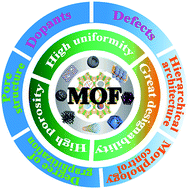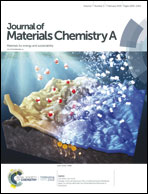Metal–organic frameworks: a promising platform for constructing non-noble electrocatalysts for the oxygen-reduction reaction
Abstract
Due to their significance in energy-conversion applications, the development of efficient non-noble electrocatalysts for the oxygen reduction reaction (ORR) to accelerate the sluggish cathodic reaction for fuel cells and metal–air batteries has attracted extensive attention. Metal–organic frameworks (MOF), a family of crystalline organic–inorganic porous materials constituted by ligands and metal struts, have been identified as a promising platform for preparing efficient ORR catalysts. In this review, the progress and current developments of MOF derivatives as non-noble ORR catalysts are summarized. Beginning with an introduction of the general principles in fabricating efficient non-noble ORR catalysts, the MOF-directed synthesis in the fabrication of non-noble catalysts with finely controlled local electronic structures, extrinsic structures and interface properties is reviewed and discussed. The construction of special local electronic structures and morphologies under the guidelines of general principles is presented in detail. Particularly, the superiority of MOFs, as compared to other precursors, in the controlled immobilization of favourable factors into resulting catalysts is highlighted. Finally, prospects and future perspectives of MOF utilization in fabricating non-noble ORR catalysts are proposed.

- This article is part of the themed collection: Recent Review Articles


 Please wait while we load your content...
Please wait while we load your content...